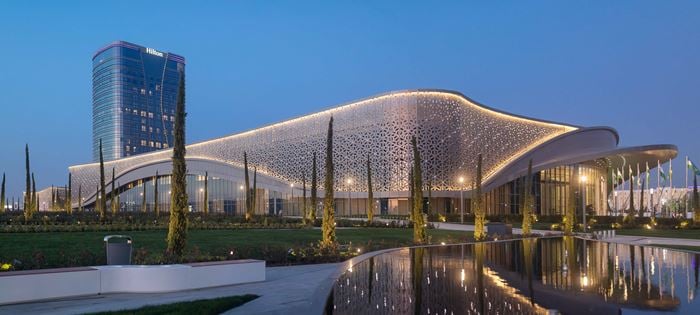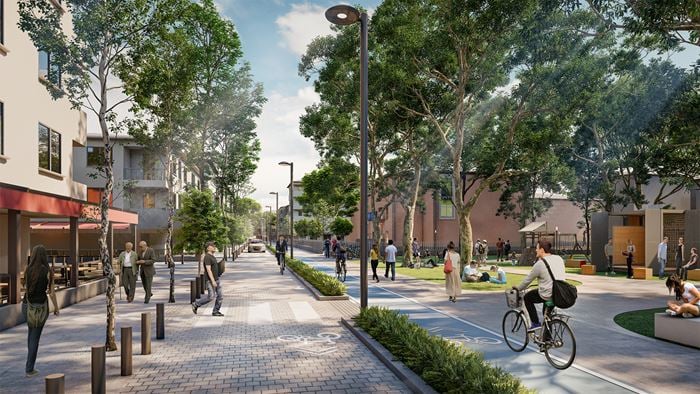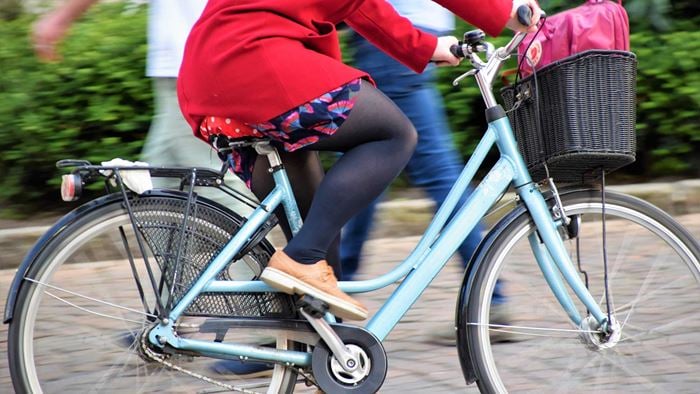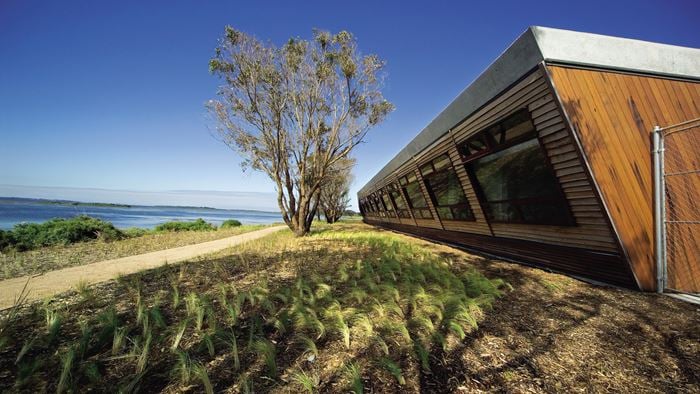The city of Samarkand is nestled in the valley of the Zerafshan River in the north-east of Uzbekistan. Celebrated by UNESCO, Samarkand boasts vibrant cultural and architectural heritage and has long been a central trading point across Asia.
So, how can historic cities design attractive resorts for visitors while enhancing quality of life for local residents?
The challenge was to design a contemporary tourism complex to help Samarkand position as a host city of the future while regenerating the area surrounding the existing rowing channel, creating accessible public spaces for visitors and the local community.
Arup was appointed to deliver the masterplan for this 170 hectare site and led the architectural design, engineering and consultancy services from concept to detailed design.
Designed to mesh with the traditional fabric of the city, the project consists of eight hotels, a congress centre and a range of social amenities, where hospitality and leisure activities are intertwined.
Project Summary
170 ha site area
8hotels
140 haoutdoor area
.jpg?h=530&mw=950&w=950&hash=46391DF17F60E8CEEB8CEC5E01328266)
Sustainable design as a driving force
The masterplan and building design for the new tourism centre seek to regenerate the area with an abundance of public green space for local residents.
Opening the city up to a new generation of tourists, the complex features a variety of mixed-use buildings with indoor and outdoor spaces, as well as a zoo and a wedding venue, providing public and private leisure spaces for local residents including families and children.
The design incorporates innovative features such as green roofs, permeable paving, and photovoltaic panels, enhancing energy efficiency and minimising the area’s environmental footprint. Local vegetation variations, infiltration trenches, and bioswale vegetated channels to collect rainwater, all contributing to natural resource preservation.
The Arup team has also introduced energy-efficient design measures including LED lighting systems across the masterplan and all the different buildings. Outdoor lighting has been thoughtfully designed to preserve biodiversity and minimise light pollution, harmonising the built environment with the natural surroundings.
Sustainable mobility is another key feature, with a broad range of mobility options like public transport, bicycle routes and parking spaces, as well as electrical vehicle charging stations. Prioritising public transport and micro-mobility options reduce the project’s carbon footprint and promote sustainable transportation alternatives.
The development nurtures an inclusive environment and fosters social interaction, wellbeing, and a sense of belonging to the community.
.jpg?h=530&mw=950&w=950&hash=88034AEFE114CD3CC633C1D67FB000B0)
Samarkand old and new
Situated along the existing rowing canal, the development acts as an extension of the urban fabric, preserving the unique character of different areas of the city in this new district.
The geometry of Uzbek patterns and architectural forms were reinterpreted with a contemporary, eye-catching twist by using local materials and craftmanship, while allowing for the modular composition of the façades.
To preserve the existing water routes that feed the old city, the site has been slightly elevated to ensure better integration with the city’s rowing canal, which is being rehabilitated to host sporting events.
“Samarkand was a key stop on the Great Silk Road, a place many civilisations had crossed. I am confident that with the opening of the complex, a new era in the history of tourism in Samarkand will commence. ” Artyom Egikyan CEO of Silk Road Samarkand Management Company
Timely delivery during Covid-19
Despite the challenges caused by the Covid-19 pandemic, Arup’s team maintained a consistent and transparent communication flow with the client. Drawing on our local knowledge of Uzbekistan and previous expertise on large project schemes, the team delivered the project on schedule and to the client’s brief through the use of a Building Information Modelling (BIM) framework.
The complex was opened by the President of Uzbekistan in September 2022 and hosted that year’s Shanghai Cooperation Organisation (SCO) Summit.
.jpg?h=1115&w=2000&hash=AEF9AE96DF939CDEED4B0ABB3B7921B2) ;
;






